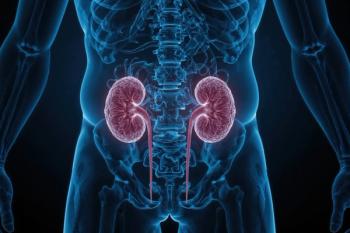
- February 2021
- Volume 36
- Issue 2
Quantitative Methods for Multielemental Analysis in Low-Volume Biofluids
In precious samples, effective methods for multielemental analysis could provide a deeper understanding of the essential role of elements as cofactors in biological and pathological processes. Tobias Konz of Nestlé Research explains.
Tobias Konz of Nestlé Research, Lausanne, Switzerland, and various associates have developed and validated what they describe as a reliable, robust, and easy-to-implement quantitative method for multielemental analysis of low-volume samples. The inductively coupled plasma mass spectrometry (ICP–MS)-based method comprises the analysis of 20 elements (Mg, P, S, K, Ca, V, Cr, Mn, Fe, Co, Cu, Zn, Se, Br, Rb, Sr, Mo, I, Cs, and Ba) in 10 μL of serum and 12 elements (Mg, S, Mn, Fe, Co, Cu, Zn Se, Br, Rb, Mo, and Cs) in less than 250,000 cells, and involved the analysis of elemental profiles of serum and sorted immune T cells derived from tumor-bearing mice. The results indicate a tumor systemic effect on the elemental profiles of both serum and T cells. Konz and his colleagues believe their approach highlights promising applications of multielemental analysis in precious samples, such as rare cell populations or limited volumes of biofluids, that could provide a deeper understanding of the essential role of elements as cofactors in biological and pathological processes. Konz spoke to us about this work.
In your paper (1), you state that single-cell ICP–MS (sc-ICP–MS) is an emerging methodology that holds promise to enable multielemental analysis of low-volume samples in the future. Can you explain why you believe this?
In my view, sc-ICP–MS has become a hot topic in the field of elemental analysis, and rightly so. Scientists working in the field of bioanalytics applied this approach to look into the smallest units of life. As a matter of fact, most biochemical processes take place in cells. Elemental bioanalysis in cells makes it possible to obtain deep insights into cellular processes and the biological status of specific cells. In comparison, the analysis of bioliquids mainly provides insights on a systemic level of the corresponding organism. Over the last decade, many scientists applied ICP–MS to study the elemental composition in all kinds of biofluids and tissues. Because of the latest technical developments, it is now possible to achieve ever lower detection limits. Thus, it is now possible to examine individual cells and their elemental composition—at least partially. This may open a completely new field of application for ICP–MS and there are many scientists who are about to prove this.
Why is ICP–MS generally considered being the method of choice for multielemental analysis as compared to other ICP techniques (atomic emission spectroscopy [AES] or optical emission spectroscopy [OES]) or more traditional atomic absorption (flame atomic absorption [F-AAS] or graphite furnace atomic absorption [GF-AAS])?
ICP–MS is unarguably the gold standard for elemental and especially multielemental analysis. This is mainly because of the fact that this technique is extremely versatile compared to ICP–OES/AES and atomic absorption spectroscopy. Most AAS devices apply element-specific radiation sources (hollow cathode lamps) that enable the detection of a single element at the same time. Although there are some commercially available AAS instruments that allow the detection of 10–20 elements simultaneously, sensitivity limitations hamper the analysis of most trace and ultratrace elements. ICP–OES allows multielemental analysis, is relatively easy to setup, and well-suited for high-throughput analysis—however, spectral interferences can be challenging. ICP–MS allows high-throughput, multielemental analysis with the lowest-possible detection limits. It offers a linear detection range of up to 10 orders of magnitude, enables isotopic analysis (isotope dilution analysis for quantification, control of spectral interferences), and it is possible to analyze any type of sample material (gases, liquids, solids). Furthermore, high-resolution separation techniques, such as high-performance liquid chromatography (HPLC), gas chromatography (GC), and capillary electrophoresis (CE), can be hyphenated to the ICP–MS. Overall, this makes ICP-MS the most powerful and versatile technique for elemental analysis.
What are some cancer-specific multielemental profiles that you have identified?
In the mouse cancer modes under evaluation, the presence of the tumor influences the serum concentration levels of various elements. Some elements, such as sulfur, calcium, manganese, zinc, strontium and molybdenum, were not affected significantly by the presence of the tumor. On the other hand, elements such as phosphorous and copper were increased in the serum samples of tumor bearing mice, independently of the tumor type. Iron, on the other hand, was depleted. These results seem to indicate that the presence of tumor systemically influences the concentration levels of some serum elements, independently from the tumor type. On the contrary, elements such as vanadium, chromium, bromine, rubidium, cesium and cobalt show trends for tumor-specific concentration changes. Furthermore, our results show that different immune T cells (CD4+ and CD8+) have specific mineral profiles reflecting their specific immune function. Moreover, the presence of a tumor seems to have an impact in the mineral contents of T cells. Indeed, we observed elemental modulations within CD8 cells that could be associated with presence of cancer, such as higher levels of magnesium and manganese and lower levels of iron, cobalt, and rubidium. These findings might indicate an increased metabolic need of immune cells for manganese and magnesium in the presence of a tumor.
What are the biggest challenges that you encounter in this analysis method?
While the analysis of small amounts of biofluids is quite straightforward (centrifugation to remove particles and a simple dilution step), the analysis of cells is more challenging. In fact, one hurdle we faced during method development was to remove the cell sorting buffer (containing a high concentration of various elements of interest) from the cells. As large volumes of this buffer are required for a single cell-sorting experiment (roughly 10 L in our case), it was not possible to prepare a buffer solution based on reagents which are suitable for trace elemental analysis. For a washing step, we applied filters or considered osmosis for buffer removal, but none of these sample preparation strategies proved to be suitable. Finally, applying a mild centrifugation step to form a cell pellet, followed by removing the supernatant with a pipette, provided satisfying results. However, the removal of a few microliters from an Eppendorf tube, and at the same time maintaining the integrity of a tiny cell pellet, remains the Achilles heel of the method, and requires some finesse and experience.
With such small samples, is contamination an issue?
Contamination is always a challenge in ultratrace elemental analysis. Acid-washing, working in a clean environment and under a fume hood are the minimum requirements to obtain high quality results. However, contamination is not more challenging in this method, as compared to most other ICP–MS based methods dealing with trace and ultratrace analysis. This is mainly due to the fact that a relatively moderate sample dilution of (1:10) and few sample preparation steps are applied. Contamination could arise, for example, from plastic materials. We mitigate this risk by applying an acid-washing step up front. Another often underestimated source of contaminants are chemicals and reagents applied during sample preparation. They often contain elements (for example, iron) that enter the sample in this way and thus mix with the analytes. Because of the inherent properties of elemental mass spectrometry, it is then no longer possible to distinguish easily between endogenous and exogenous elements. This can lead to an overestimation of the element concentration. In our study, we only apply buffer solutions and nitric acid during sample preparation. Thus, the overall contamination risk is relatively low.
Can you briefly summarize the results that you have achieved so far?
We have developed a quantitative analytical strategy that enables the analysis of 20 biologically relevant elements in low-volume samples (10 μL) of serum. By applying an optimized workflow, the method is also applicable for the quantification of 12 elements in a low number of sorted cells (250,000 cells). In our paper, we give detailed descriptions of the experimental setup. This enables scientist to apply the approach to study biological-relevant elements (major trace and ultratrace elements) in very small sample volumes. Applied to tumor cells, we could demonstrate that the presence of certain cancer types influences differentially the elemental composition of serum concentrations. Furthermore, we could show that different immune T cells (CD4+ and CD8+) have specific mineral profiles reflecting their specific immune function. Last but not least, the presence of a tumor effects the mineral composition of T cells.
What are your next steps in this work?
I am now working in a company which is rather focused on elemental analysis is food and pharmaceutical products. However, my former colleagues are continuing our research work and other scientist are working on different approaches to study trace- and ultratrace elements in cells. I am confident that rather sooner than later we will see new findings in this field, both in pre-clinical and clinical studies.
References
1. T. Konz, C. Monnard, M. Rincon Restrepo, J. Laval, F. Sizzano, M. Girotra, G. Dammone, A. Palini, G. Coukos, S. Rezzi, J.-P. Godin, and N. Vannini, Anal. Chem. 92(13), 8750– 8758 (2020).
Tobias Konz is currently leading the Elemental Analysis group at UFAG Laboratorien (in Sursee, Switzerland), specializing in quantitative analysis of elements in food and pharmaceutical products (GMP and ISO environment).
Articles in this issue
almost 5 years ago
How Pharmaceutical Innovation is Saving the Worldalmost 5 years ago
Why Does -1 x -1 = 1?Newsletter
Get essential updates on the latest spectroscopy technologies, regulatory standards, and best practices—subscribe today to Spectroscopy.




